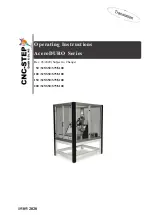
The OmniSwitch 8800
Availability Features
OmniSwitch 8800 Hardware Users Guide
December 2004
page 1-5
Hot Swapping
Hot swapping refers to the action of adding, removing, or replacing certain hardware components without
powering off your switch and disrupting other components in the chassis. This feature greatly facilitates
hardware upgrades and maintenance and also allows you to easily replace components in the unlikely
event of hardware failure. The following hardware components can be hot swapped:
•
Chassis Management Modules (CMMs)
•
Ethernet Network Interface modules (ENIs)
•
Gigabit Ethernet Network Interface modules (GNIs)
•
10 Gigabit Ethernet Network Interface modules (10GNIs)
•
Power supplies
•
Fan tray
Hot Swapping Non-Redundant Management Modules and Power Supplies.
If there is only one CMM
or power supply installed in the chassis and either of these components is removed or replaced, all switch
functions will be stopped until a replacement is installed.
Hot Swapping NI Modules.
It is recommended that you hot swap NIs of the same type
(e.g., OS8-GNI-U8) whenever possible. Otherwise, the network configuration may be adversely affected.
For information on hot swapping CMMs, refer to
Chapter 3, “Chassis Management Module (CMM).”
For
information on hot swapping NI modules, refer to
Chapter 5, “Network Interface (NI) Modules.”
information on hot swapping power supplies and fan trays, refer to
Hardware Monitoring
Automatic Monitoring
Automatic monitoring refers to the switch’s built-in sensors that automatically monitor operations. The
majority of automatic monitoring is provided by the CMM. If an error is detected (e.g., over-threshold
temperature), the CMM immediately sends a trap to the user. The trap is displayed on the console in the
form of a text error message. (In the case of an over-threshold temperature condition, the CMM displays
an amber TEMP LED in addition to sending a trap.)
LEDs
LEDs, which provide visual status information, are provided on the CMM, NI, SFM, and power supply
front panels. LEDs are used to indicate conditions such as hardware and software status, temperature
errors, link integrity, data flow, etc. For detailed LED descriptions, refer to the corresponding hardware
component chapter (e.g., “Network Interface (NI) Modules”).
User-Driven Monitoring
User-driven hardware monitoring refers to CLI commands that are entered by the user in order to access
the current status of hardware components. The user enters “show” commands that output information to
the console. Show commands for all features are described in detail in the
OmniSwitch CLI Reference
Guide
.
















































